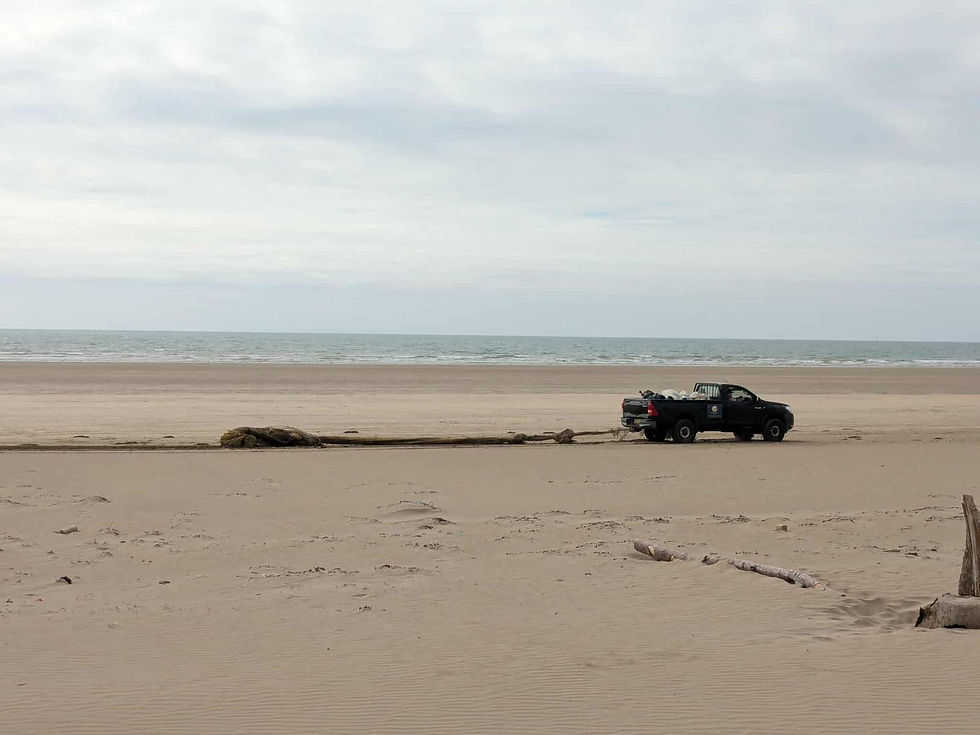Ocean plastics - 9 commonly asked questions and answers.
- Tyrone Probert

- May 23, 2023
- 3 min read
What are ocean plastics?
Ocean plastics are any type of plastic that ends up in the ocean. This includes items like plastic bottles, bags, straws, and packaging. When plastic breaks down in the ocean, it can release harmful chemicals that can harm marine life.
When did ocean plastic pollution start?
Plastic pollution in the ocean has been a problem for decades. The first study to document plastic pollution in the ocean was conducted in the 1960s. Since then, the amount of plastic pollution in the ocean has increased dramatically.
What can you do to reduce ocean plastic pollution?
There are many things you can do to reduce ocean plastic pollution. Here are a few tips:
Reduce your use of single-use plastics.
Recycle plastic whenever possible.
Dispose of plastic properly.
Support businesses that are working to reduce plastic pollution.
How much ocean plastic is fishing nets?
A recent study found that fishing nets make up over 75% of the plastic in the Great Pacific Garbage Patch. This is because fishing nets are often lost or discarded in the ocean. When this happens, they can entangle and kill marine life.
Can ocean plastic be recycled?
Not all ocean plastic can be recycled. Some types of plastic, like those used for food packaging, are challenging to recycle because they are contaminated with food and other materials. However, several companies are working to develop new recycling technologies that can be used to recycle ocean plastic. We recycle fishing nets into our eco plant pots and ocean plastic products, so please check them out.
Where do ocean plastics come from?
Most of the plastic in the ocean comes from land-based sources. This means it comes from landfills, rivers, and beaches; according to a scientific report by nature.com over 75% Of Plastic in the Great Pacific Garbage Patch Originates from fishing and the fishing industry. The most significant percentage of the waste discovered was fishing nets.
Where is ocean plastic pollution the worst?
The Great Pacific Garbage Patch is the most significant accumulation of plastic in the ocean. It is located in the North Pacific Ocean and is estimated to contain over 79,000 tons of plastic. However, other ocean areas are also heavily polluted with plastic, such as the North Atlantic Gyre, the South Atlantic Gyre, the North Pacific Gyre, the South Pacific Gyre, and the Indian Ocean Gyre.

Is ocean plastic being cleaned up?
Several organizations are working to clean up ocean plastic. However, it is a very difficult and expensive task. The Ocean Cleanup is one organization developing technologies to clean up ocean plastic. The organization has developed a system that uses a large floating barrier to collect plastic from the ocean. However, the system is still in the early stages of development, and it is not yet clear how effective it will be.
In July 2020, the Pew Charitable Trusts and Systemiq released a report called Breaking the Plastic Wave. "No cleanup effort is cheaper and more effective than preventing plastic from entering the environment, the study found. So the first thing to do is to reduce or stop our use of plastic.
What can we do to help?
There are a number of things we can do to help reduce ocean plastic pollution. Here are a few tips:
Reduce our use of single-use plastics.
Recycle plastic whenever possible.
Dispose of plastic properly.
Support businesses that are working to reduce plastic pollution.
Get involved in cleanup efforts.
By taking these steps, we can help reduce plastic pollution in the ocean and protect our marine life.
















Comments